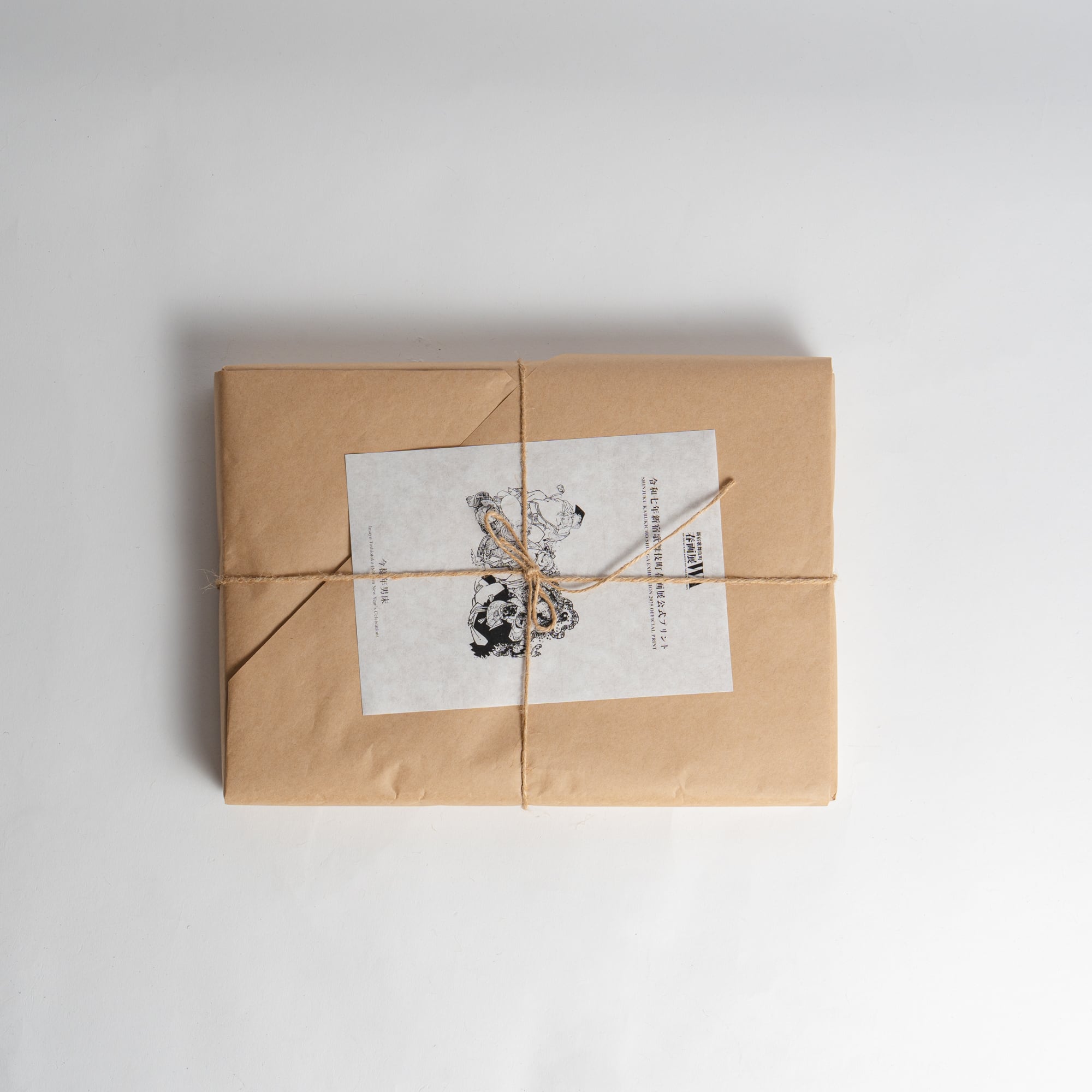

複製画【歌川国虎 色摺半紙本 『今様年男床』/文政10年(1827)】より Reproduction Print – From Utagawa Kunitoru’s Color-Printed Hanshibon “Imayotoshiotoko” / Bunsei 10 (1827)
¥16,500 税込
なら 手数料無料で 月々¥5,500から
別途送料がかかります。送料を確認する
歌川国虎は、生涯独身であったと伝えられている。そのためか、当事者よりも観察者のような視点から描かれた春画は妙にユーモラスな雰囲気をまとっている。その視点は、今の鑑賞者の視点と重なって絵と現実がリンクするような仕組みに。
「今様年男床」というタイトルも国虎特有の洒落さがある。「今様」は流行りの、「年男」はその年の吉祥とされる男性のことを表す。江戸時代の春画や文学では、床は「寝床」の意味から男女が交わる場所としても頻繁に使われるようになり、流行りの今風な男が登場する床をテーマに描かれている。さらに、江戸の春画はめでたさと掛け合わせるのが大好物で、国虎流の仕掛けが随所に施されている。
サイズ
A4
H31.8cm × W23.1cm
Utagawa Kunitoru is said to have remained unmarried throughout his life. Perhaps for this reason, the shunga he created often conveys a strangely humorous atmosphere, as if viewed from the perspective of an observer rather than a participant. This observational viewpoint creates a connection between the artwork and modern viewers, linking the image with reality.
The title, “Imayō Toshiotoko Yuka,” also reflects Kunitoru’s characteristic wit. “Imayō” refers to something fashionable or trendy, while “Toshiotoko” denotes a man considered auspicious for that year. In Edo-period shunga and literature, “Yuka” (literally “bed” or “sleeping place”) frequently became a setting for sexual encounters between men and women. Kunitoru’s work depicts a fashionable, contemporary man in such a setting.
Furthermore, Edo-period shunga often combined erotic scenes with symbols of good fortune, and Kunitoru’s clever touches and playful details appear throughout the piece.
Size
A4: H31.8 cm × W23.1 cm
-
送料・配送方法について
-
お支払い方法について




















